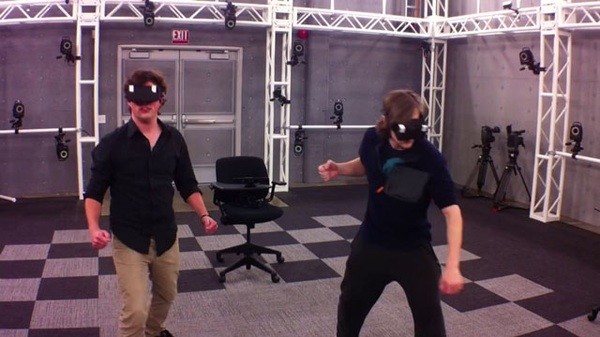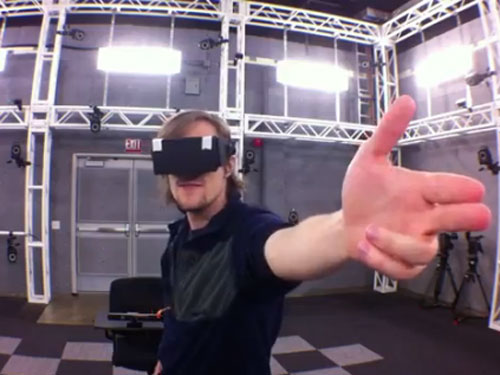‘Project Holodeck’ Hoping To Bring Full 3D Virtual Reality To Gaming

Labelled ‘Project Holodeck’ after the virtual reality system at the cutting-edge heart of the Star Trek films, a team from the University of Southern California are working on a system that will bring full 360-degree, full-body VR to gaming.
Now in talks with a number of gaming companies (including none other than the Mouse House, Disney) to make the prototype conceptual product a reality, the team described how “this is true immersion in a virtual world with simulated peripheral vision – this isn’t like watching a floating television.”
virtual world with simulated peripheral vision – this isn’t like watching a floating television.”
Combining the VR head-mounted display of the Oculus Rift headset (which is backed by id’s John Carmack, amongst others), a PlayStation Move set-up for head tracking and the [motion and orientation detection game controller] Razer Hydra for body tracking; it all adds up to a player experience quite unlike anything currently available. And that means the system not only delivers stereoscopic 3D images, but also a 90-degree horizontal field of view and a 105-degree vertical field of view. The team also plans to bring haptic feedback to the system by using fans linked to the game server to simulate the blowing of wind as you move through the game world.
Where we’ve had plastic peripherals, motion controls and gimmicks in the shape of hands-free gaming to deliver a more ‘immersive’ gaming experience, there’s a nudging sense that however technically-impressive and genuinely interesting the concept of ‘Project Holodeck’ feels, there are many more reasons to be wary. With the kind of equipment needed to bring just one ‘holodeck’ together, you better believe it’ll cost a virtual arm and a leg to install, while the kind of room needed seems extravagant. Oh, and you’ll look like a tit.
Richard Birkett

